Abstract
Aspects of the physiology of iron deposition of an iron-precipitating strain of Sphaerotilus were investigated in laboratory culture to characterize the process. Measurement of growth (incorporated L-[3H]alanine) and iron deposition (incorporated 59Fe) demonstrated that Sphaerotilus exhibit a characteristic temporal pattern of iron deposition, which is delayed until the latter portion of the exponential or the onset of the stationary growth phase. The growth rate (mu=0.17 h-1) was apparently independent of the iron concentration in the medium. There was, furthermore, no direct correlation between the iron concentration and final cell protein yield. It was concluded from experiments involving growth on artificial substrata (glass cover slips) that sessile populations derived no phsiological advantage (manifested as differences in growth rates) over free-living cells. There was no difference in the rate or onset of iron deposition of attached compared to suspended cells. Blocking of protein synthesis by the addition of chloramphenicol suggested that, once iron deposition was initiated, continued protein synthesis was not required for full expression of this capability. The results suggested that iron deposition may be possibly mediated by certain of the constituents of the organism's sheath.
Full text
PDF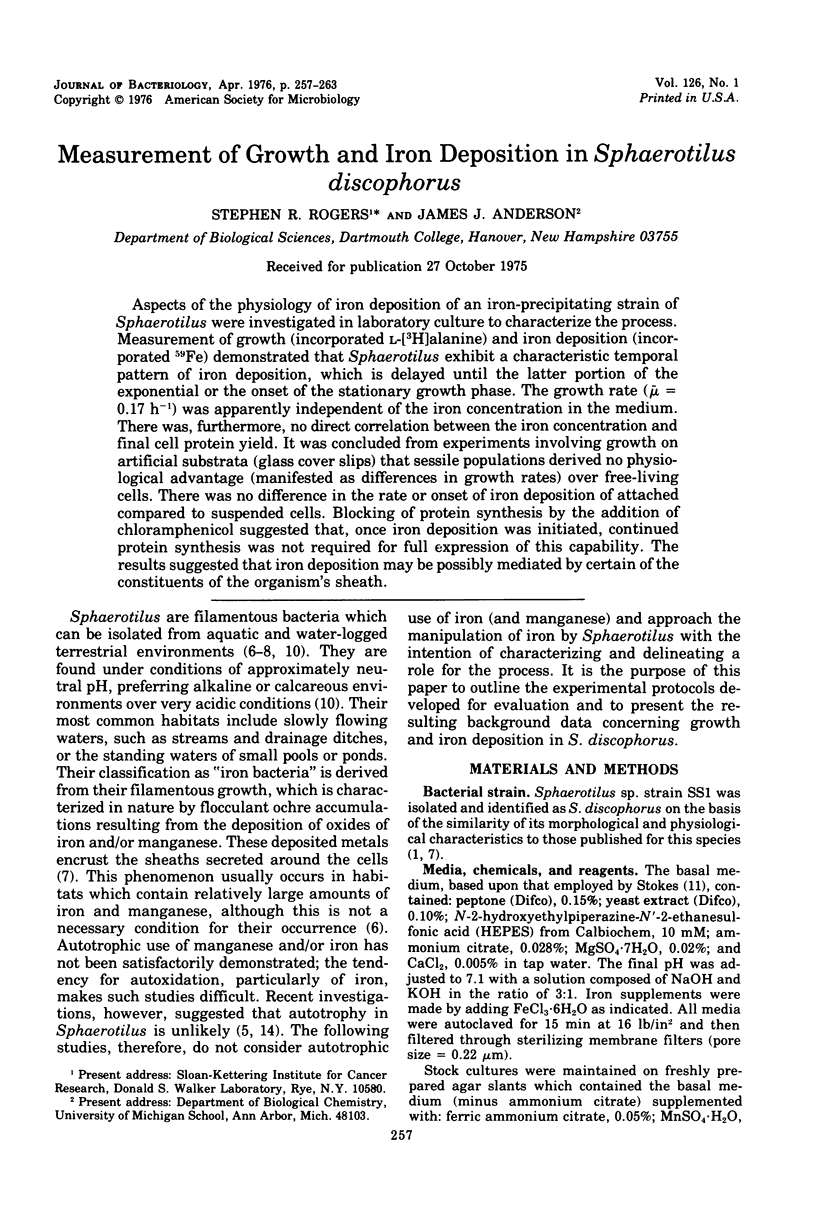
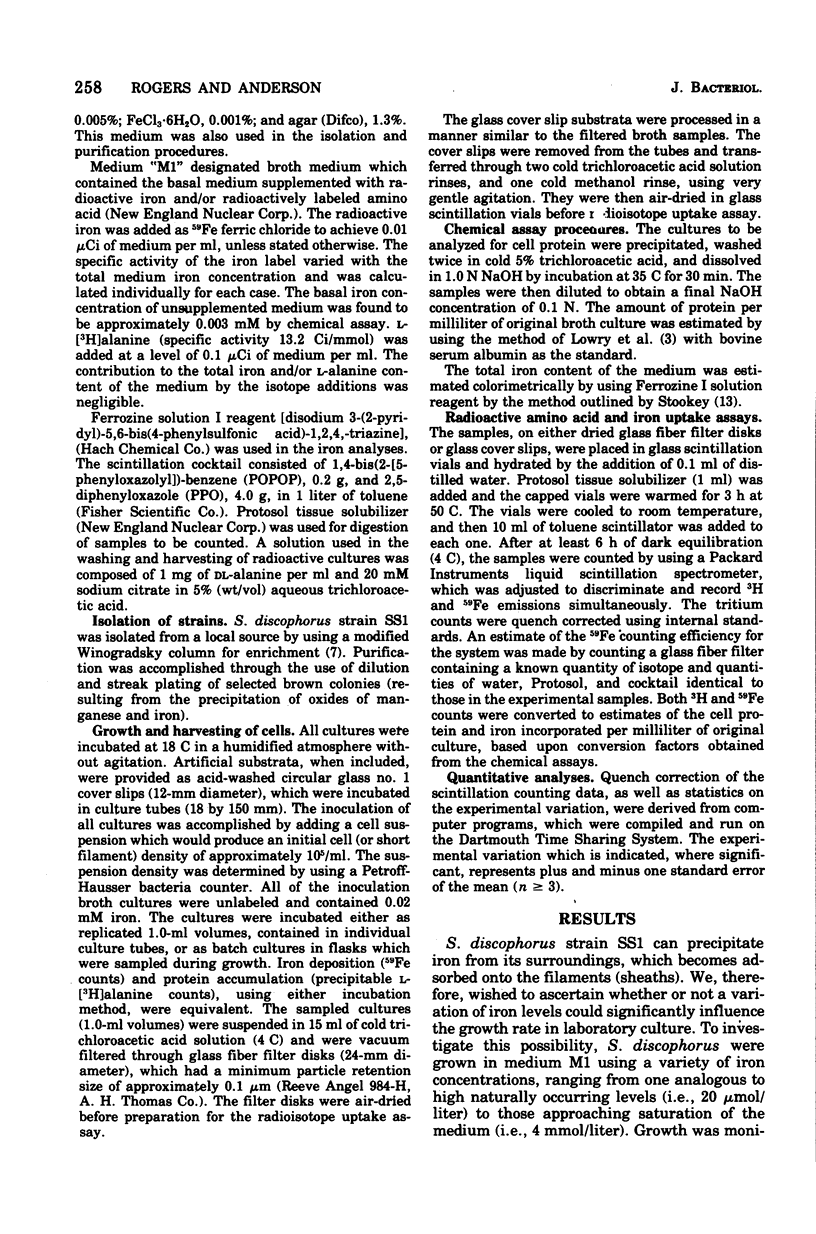
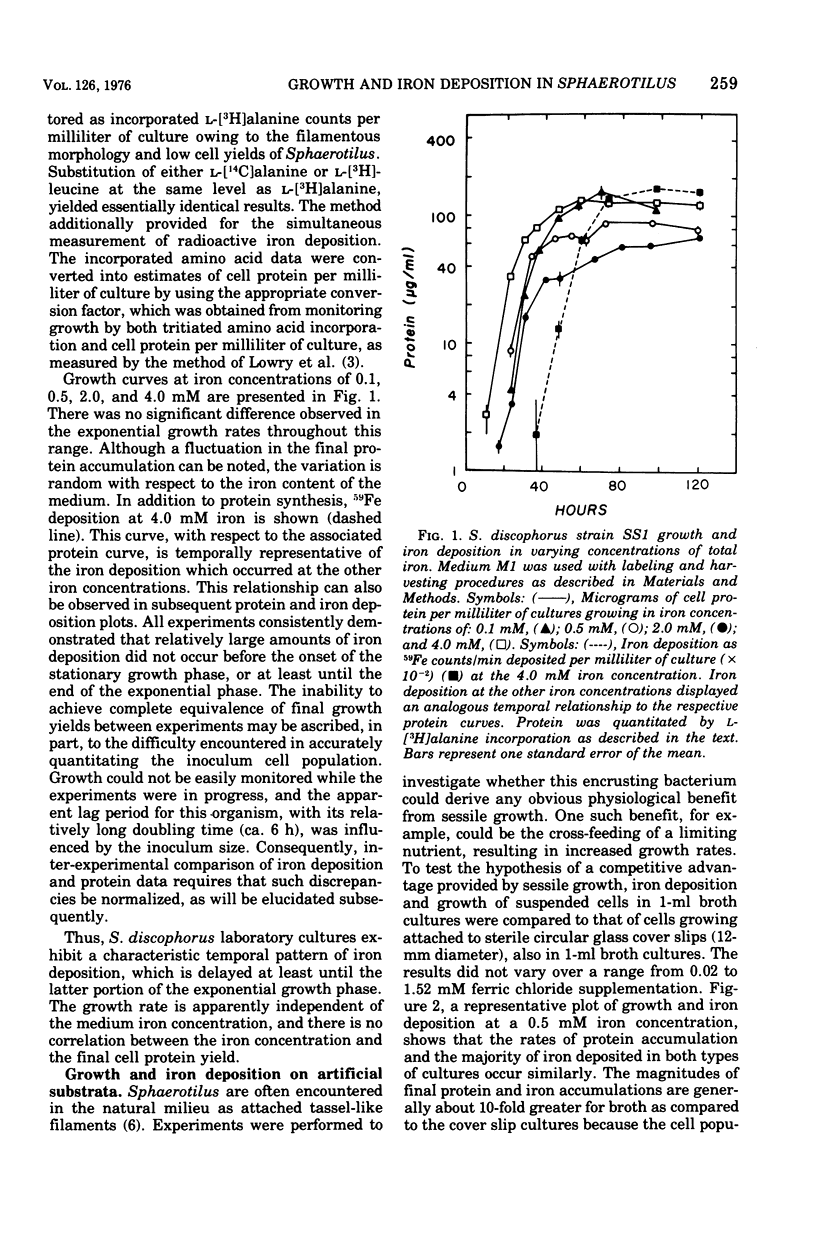
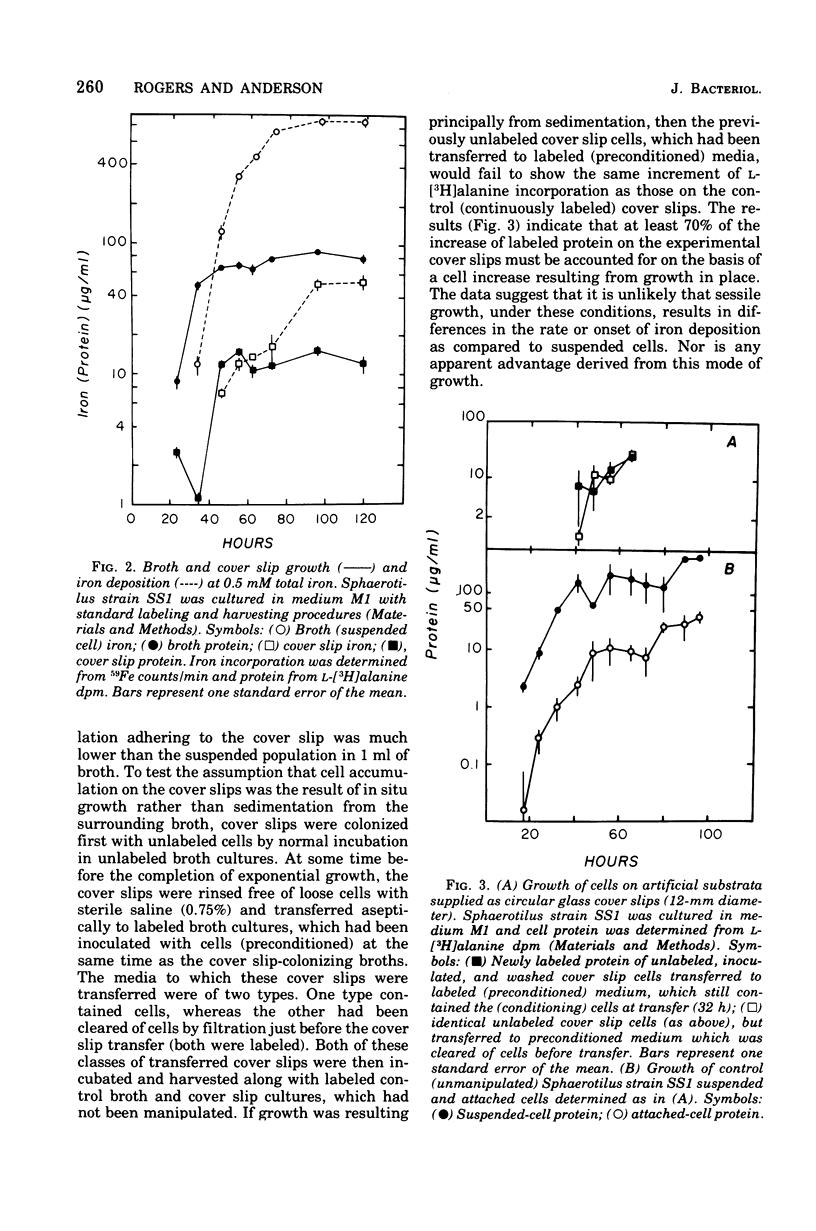
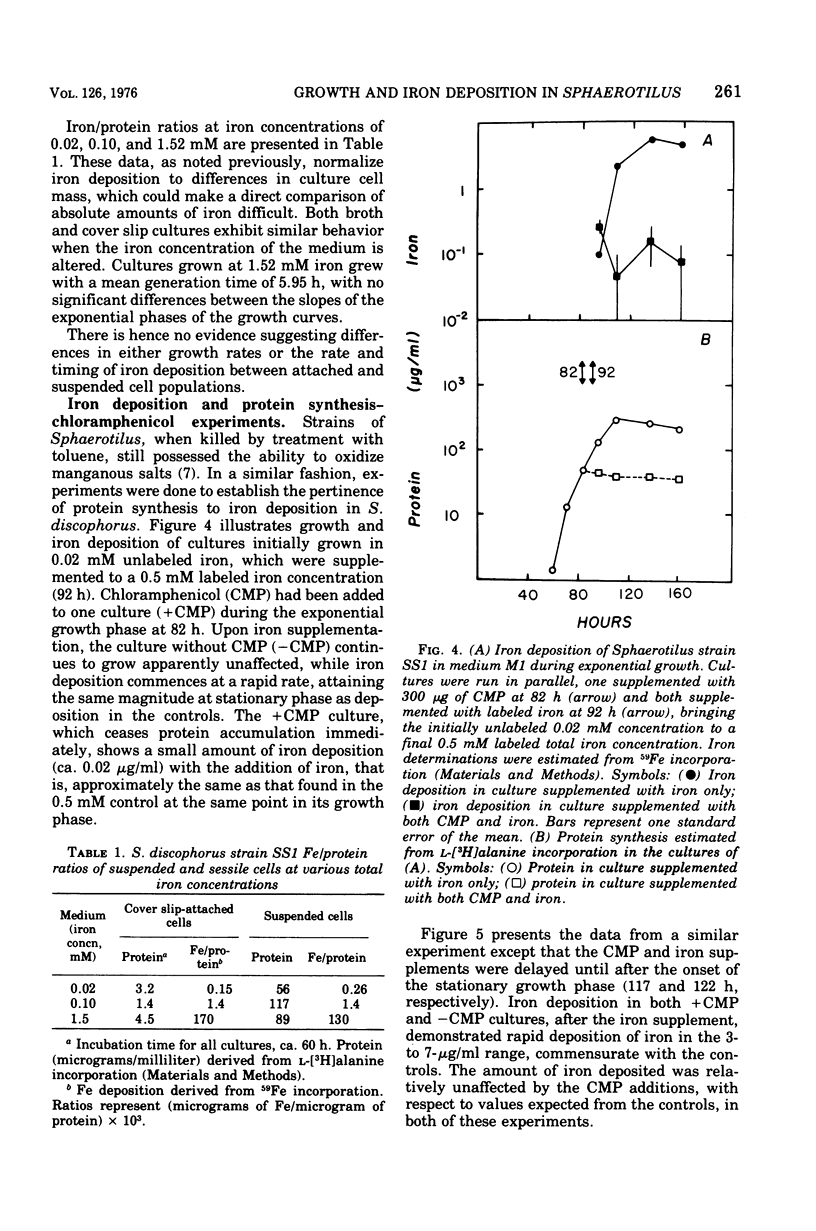
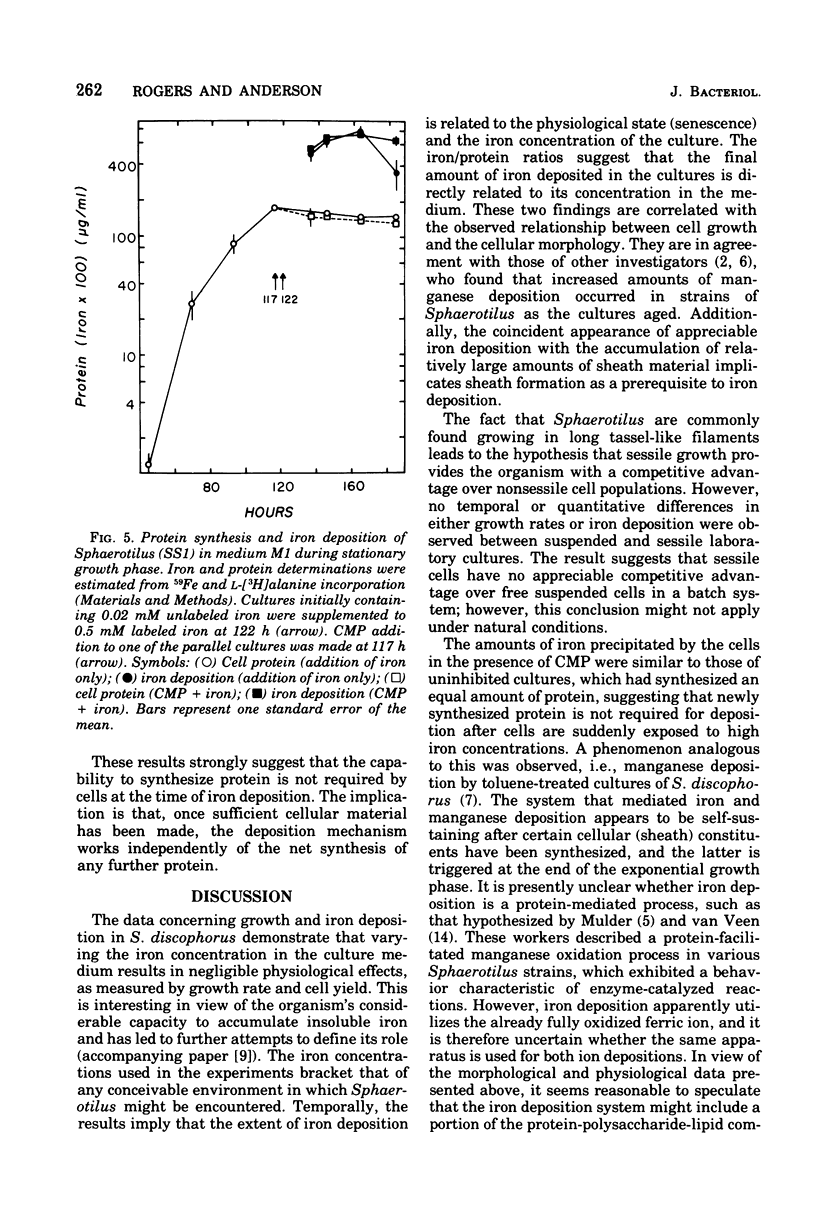
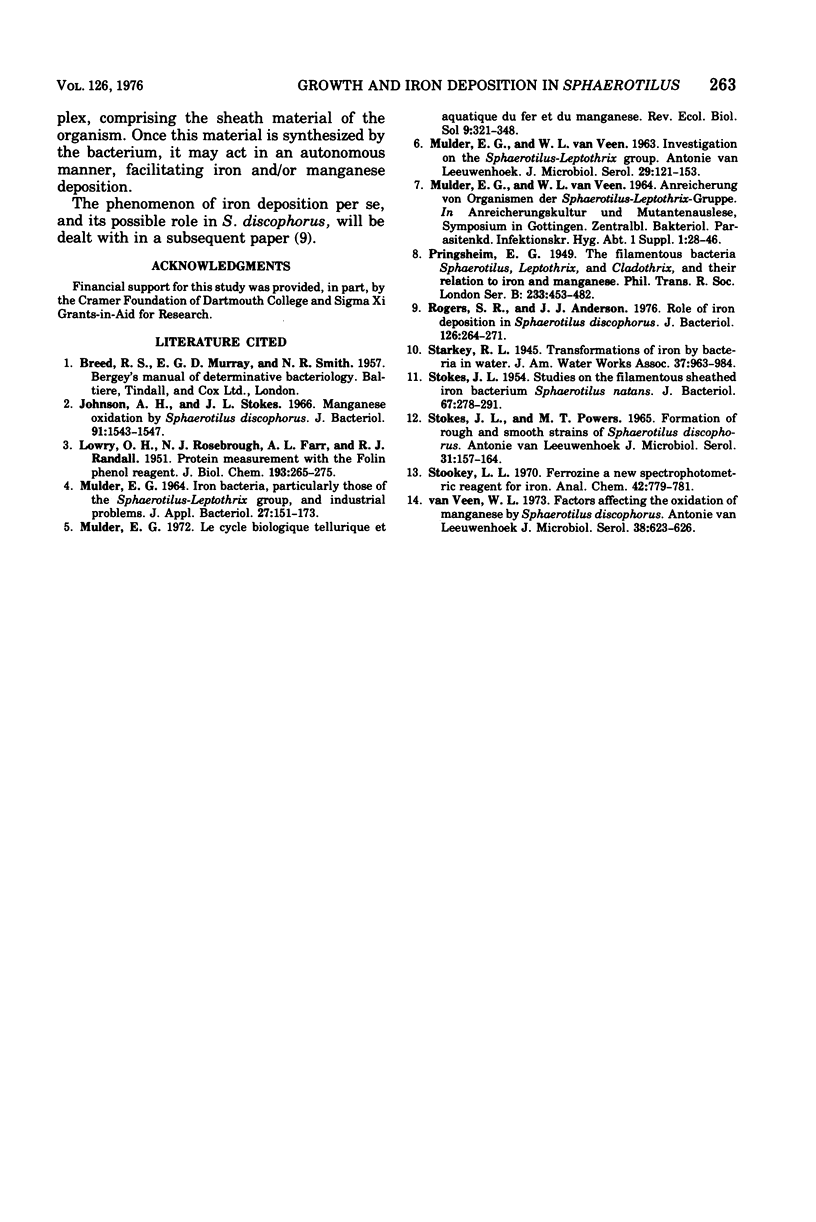
Selected References
These references are in PubMed. This may not be the complete list of references from this article.
- Johnson A. H., Stokes J. L. Managanese oxidation by Sphaerotilus discophorus. J Bacteriol. 1966 Apr;91(4):1543–1547. doi: 10.1128/jb.91.4.1543-1547.1966. [DOI] [PMC free article] [PubMed] [Google Scholar]
- LOWRY O. H., ROSEBROUGH N. J., FARR A. L., RANDALL R. J. Protein measurement with the Folin phenol reagent. J Biol Chem. 1951 Nov;193(1):265–275. [PubMed] [Google Scholar]
- MULDER E. G., VAN VEENW INVESTIGATIONS ON THE SPHAEROTILUSLEPTOTHRIX GROUP. Antonie Van Leeuwenhoek. 1963;29:121–153. doi: 10.1007/BF02046045. [DOI] [PubMed] [Google Scholar]
- Rogers S. R., Anderson J. J. Role of iron deposition in Sphaerotilus discophorus. J Bacteriol. 1976 Apr;126(1):264–271. doi: 10.1128/jb.126.1.264-271.1976. [DOI] [PMC free article] [PubMed] [Google Scholar]
- STOKES J. L., POWERS M. T. FORMATION OF ROUGH AND SMOOTH STRAINS OF SPHAEROTILUS DISCOPHORUS. Antonie Van Leeuwenhoek. 1965;31:157–164. doi: 10.1007/BF02045886. [DOI] [PubMed] [Google Scholar]
- STOKES J. L. Studies on the filamentous sheathed iron bacterium Sphaerotilus natans. J Bacteriol. 1954 Mar;67(3):278–291. doi: 10.1128/jb.67.3.278-291.1954. [DOI] [PMC free article] [PubMed] [Google Scholar]


